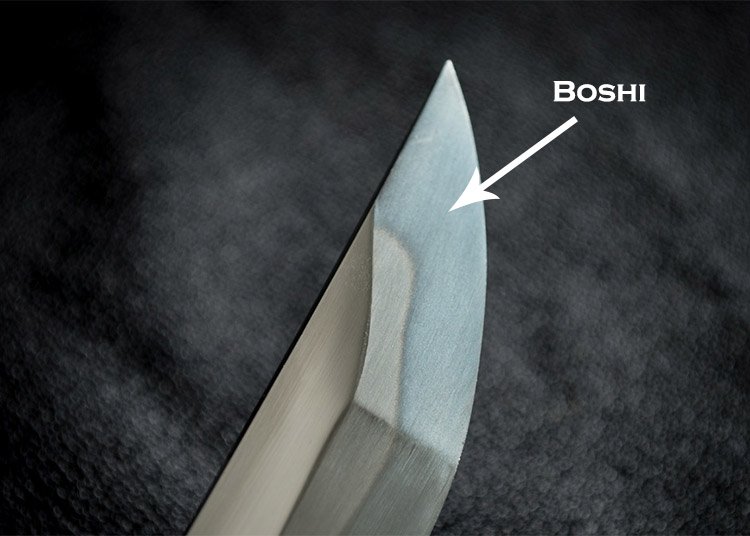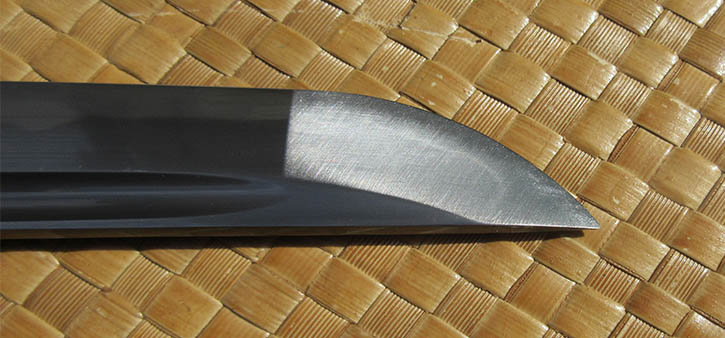Recent Articles
-
Christmas Sword Buying Guide 2025
Dec 03, 25 10:53 PM
Boshi

The boshi is the part of the hamon temper line that extends to the kissaki, the tip of a Japanese sword. Like with polishing the tip generally, to bring out the tempering detail is extremely time consuming work - almost as time consuming as polishing the rest of the blade..
For this reason, most Katana that have a real hamon and that have been differentially tempered are polished in such a way that the details of the tempering may be partially obscured, as in the example picture below.
 It is still viable, but only just..
It is still viable, but only just..An ideally shaped boshi follows the rest of the hamon temper line and turns back on itself widely at the tip, usually touching the yokote line which separates the kissaki from the rest of the blade.
The biggest issue with boshi is when the temper line touches the ha (edge of the blade) or, worst case scenario, actually falls off the edge of the blade. This is classed as a fatal flaw, and such a sword cannot be used safely for tip cutting as the tip is considered to be compromised structurally if the temper line drops off.
Swords that have not been differentially hardened do not have boshi.
I hope this information on boshi has been helpful. To return to Samurai Sword Terminology from Boshi, click here

Buying Swords Online Can Be DANGEROUS!
Find the Best Swords in the:
Popular & Recommended ARTICLES

The ONLY true free online magazine for sword enthusiasts. Delivered once a month on the 1st day of the month, no filler and no BS, just the latest sword news & info delivered straight to your inbox.












